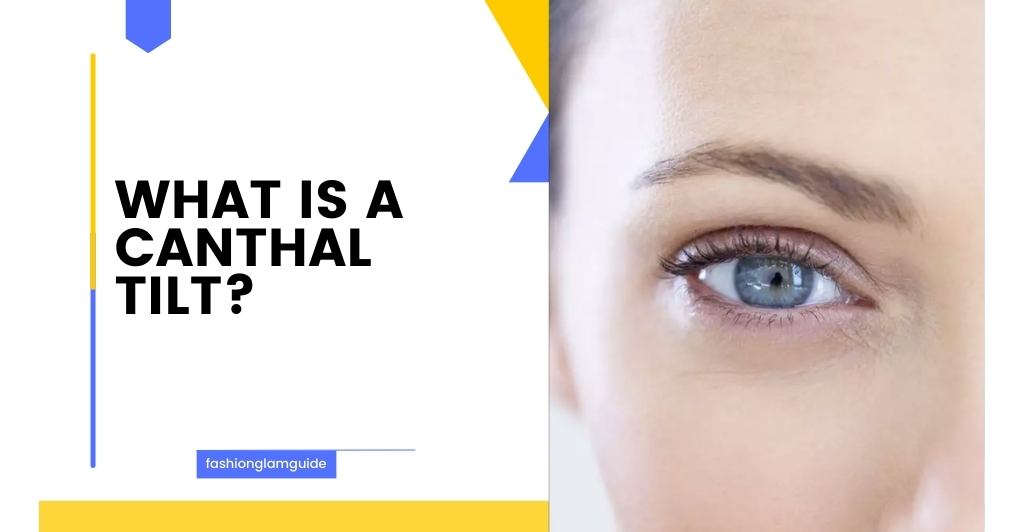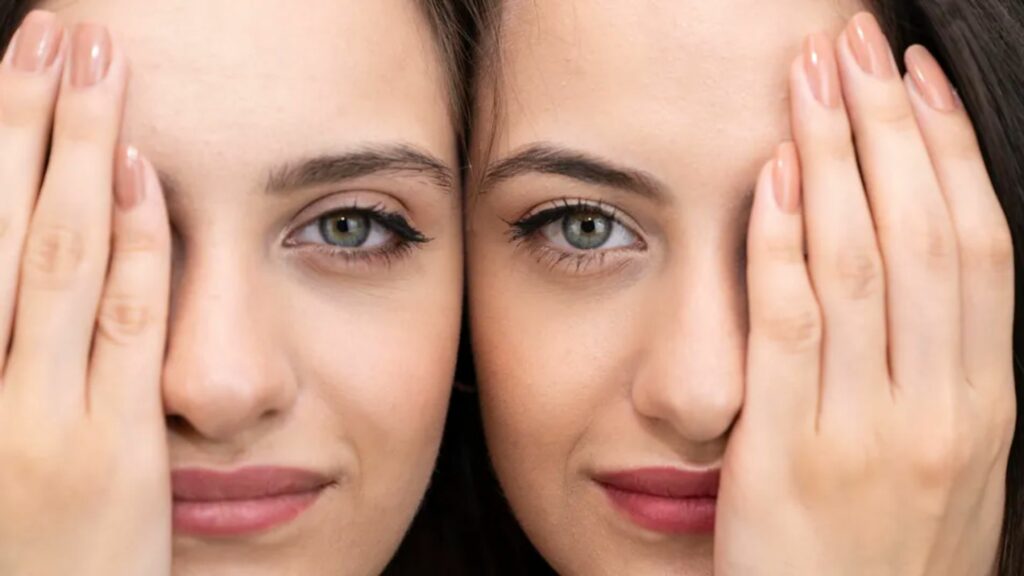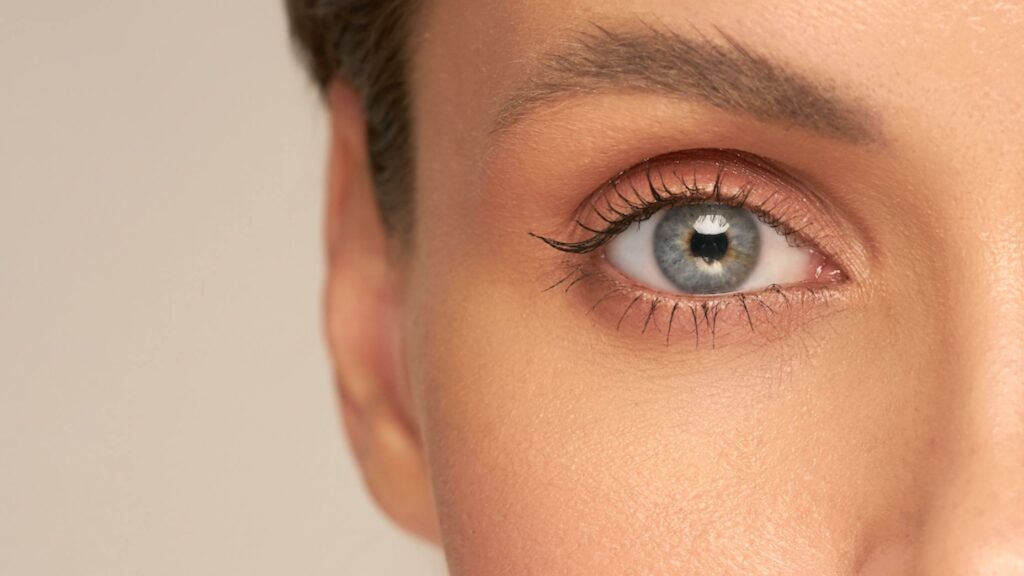Blog
What Is a Canthal Tilt, and Does It Really Determine How Attractive You Are?

Are you looking for What Is a Canthal Tilt? Read to know more. If you are right now scrolling through this article then there’s a high chance that you stumbled upon the latest TikTok viral trend too. Well, as you already know the one trend that’s been making waves recently is all about Canthal Tilt!
People are buzzing about Canthal Tilt on TikTok, and it’s got everyone curious. But what exactly is Canthal Tilt, and why is it suddenly getting so much attention? Don’t worry, we’ve got you covered.
In this article, we’re diving deep into the world of Canthal Tilt, exploring what it is, how Canthal Tilt Influence Perceptions of Facial Beauty, Does Canthal Tilt Really Determine How Attractive You Are, and everything in between. So, if you wanna know what all the TikTok fuss is about, you’re in the right place! Let’s get started.
What Is a Canthal Tilt?
Canthal tilt refers to the angle formed by the inner and outer corners of the eyes. It’s basically how your eyes tilt, either upward or downward. Draw a line from the inner corner to the outer corner of your eye. The resulting angle represents your canthal tilt. Everyone’s tilt is different, some have eyes that tilt up a bit, while others tilt down.
How Much Does Canthal Tilt Vary Among Different People?
Canthal tilt, the angle formed by the inner and outer corners of the eyes, varies significantly from person to person. This tilt can range from approximately 5 to 15 degrees.
Positive canthal tilt refers to eyes that tilt slightly upward at the outer corners, while negative canthal tilt describes eyes that tilt slightly downward at the outer corners. Positive canthal tilt can give a more lifted and awake appearance to the eyes, while negative canthal tilt may contribute to a more sultry or intense look.
However, each person’s facial structure is unique, resulting in a wide range of variations in canthal tilt. Factors such as genetics, facial shape, and age can influence the degree of tilt a person has.
So, if you’ve ever noticed that your friend’s eyes tilt differently from yours, it’s simply a reflection of the beautiful diversity found in human facial features. Understanding canthal tilt helps us appreciate the uniqueness of each individual’s appearance and celebrate the beauty in our differences.
Cultural and Historical Significance of Canthal Tilt
Exploring the cultural and historical significance of canthal tilt sheds light on how different societies have viewed facial features over time. Canthal tilt has been interpreted in various ways across cultures.
In some ancient civilizations, such as Egypt, upward-tilting eyes were associated with gods and goddesses, symbolizing divine favor and protection. Meanwhile, downward-tilting eyes were sometimes depicted in artworks to convey a sense of wisdom or solemnity.
Throughout history, artists and writers have often used eye tilt to convey emotions or personality traits in their work, adding depth to their creations.
In some Asian cultures, such as Japan, upward-tilting eyes have been traditionally associated with positivity and friendliness. Conversely, in certain Western cultures, downward-tilting eyes have been perceived as mysterious and alluring.
Understanding the cultural and historical context of canthal tilt adds layers to our appreciation of human beauty and how we connect. Whether your eyes tilt up, down, or somewhere in between, it’s all part of what makes you uniquely you.
How Does Canthal Tilt Influence Perceptions of Facial Beauty?
Canthal tilt __ the angle at which your eyes tilt can shape how people see your facial beauty. If your eyes tilt upward at the outer corners, like when you’re smiling, it can give off a friendly and approachable vibe. Think of your favorite celebrity who always seems to have a warm and welcoming expression – chances are, their eyes tilt up a bit.
On the other hand, if your eyes tilt downward at the outer corners, it can add a touch of mystery or intensity to your look. Imagine someone with eyes that seem to hold a secret, drawing you in with their enigmatic gaze.
Have you ever observed how people react differently to your facial expressions based on the angle of your eyes? It’s fascinating how slight variations in canthal tilt can influence interpersonal interactions and perceptions.
Maybe when your eyes tilt upward, friends are more likely to approach you for a chat, sensing your openness and warmth. Or perhaps when your eyes tilt downward, you’ve noticed that others are intrigued by your aura of mystery, wanting to learn more about you.
Remember, beauty is different for everyone – what one person likes, another may not. So, whether your eyes tilt up, down, accept it! It’s just one of the many special things that make you who you are. So, next time you see yourself in the mirror, take a moment to like your unique eyes – no matter how they tilt!
Are There Cosmetic Procedures Available to Alter Canthal Tilt? What Are The Implications?

Some individuals may desire to modify their canthal tilt for cosmetic reasons. Luckily, there are cosmetic procedures available to address this concern, although it’s important to consider the implications before opting for them.
Available Cosmetic Procedures
Canthoplasty: This surgical procedure involves making precise incisions to adjust the position of the outer corners of the eyes, resulting in a desired tilt.Usually conducted using local anesthesia by a skilled plastic surgeon. Canthoplasty offers a permanent solution to altering canthal tilt.
Canthopexy: Unlike canthoplasty, canthopexy aims to reinforce the existing structures around the outer eye corners without altering the angle. It’s a surgical technique preferred by those seeking subtle changes to their canthal tilt.
Injectable Fillers: Injectable fillers, such as those based on hyaluronic acid, can be strategically injected around the outer eye corners to create the illusion of a different canthal tilt. While less invasive than surgical options, the results are not permanent and need treatments from time to time.
Implications to Consider
Risks and Complications: Like any surgical operation, canthoplasty and canthopexy come with potential risks including temporary scarring, and uneven results. It’s crucial for individuals considering these procedures to discuss potential complications with their surgeon and assess the risks versus the benefits.
Natural Appearance: Every individual wants a natural looking surgery result when altering canthal tilt. Overcorrection or excessive manipulation can lead to an unnatural appearance, making clear communication of aesthetic goals with the surgeon vital to ensure realistic expectations.
Recovery and Downtime: Both surgical and non-surgical interventions for canthal tilt alteration require a recovery period. Patients may experience swelling or some other discomfort in the treated area, necessitating time off from work or social activities.
Cost Considerations: The price of canthal tilt adjustment procedures differs based on factors like the method employed, the skill level of the surgeon, and geographic location. Patients should inquire about the total cost, including pre – operative consultations, surgical fees, and post-operative care, to make an informed decision.
In conclusion, while cosmetic procedures to adjust canthal tilt offer potential benefits for individuals seeking to enhance their appearance, it’s essential to approach them with careful consideration. Try to consult with a certified and experienced plastic surgeon and discuss expectations, risks, and outcomes. These things are crucial to achieving satisfactory results.
Ultimately, the decision to undergo canthal tilt alteration should be based on informed consent and a thorough understanding of the implications involved.
Does Canthal Tilt Really Determine How Attractive You Are?

The idea of beauty is often varies from person to person. When considering features like canthal tilt, which refers to the angle formed by the outer corners of the eyes, its impact on attractiveness may seem significant to some but not to others.
Factors Influencing Attractiveness
Symmetry: While symmetry is often associated with attractiveness, individual preferences differ. Canthal tilt is just one aspect of facial symmetry, and its importance in overall attractiveness can be totally different depending on the different persons and cultures.
Facial Harmony: The overall balance and proportion of facial features determines attractiveness. Canthal tilt, while part of facial aesthetics, is not necessarily the primary determinant of attractiveness.
Confidence and Personality: Confidence and personality play crucial roles in how attractive someone appears to others. A person’s demeanor, charisma, and inner qualities often overshadow specific facial features like canthal tilt.
Cultural Norms: Beauty standards are influenced by cultural norms and societal trends. What is considered attractive in one culture may not hold the same significance in another, emphasizing the subjective nature of beauty.
Ultimately, beauty is diverse, and there is no single feature that universally determines attractiveness. Instead of fixating on specific facial features, embracing individuality and confidence can be the most attractive qualities of all.
Expert Opinions from Dermatologists and Cosmetic Surgeons
To provide valuable insights into the topic of canthal tilt and its impact on attractiveness, we consulted with reputable dermatologists and cosmetic surgeons for their professional opinions. Here’s what they had to say about it.
1. “Canthal tilt is just one aspect of facial anatomy, and its significance in determining attractiveness varies among individuals. While some patients may express concerns about their canthal tilt, it’s crucial to consider the overall harmony of facial features and the patient’s aesthetic goals before recommending any cosmetic intervention.”
___ Dr. Smith, Dermatologist
2. Dr. Johnson, a prominent cosmetic surgeon, shared,
“As a cosmetic surgeon, nowadays I often encounter patients interested in procedures to alter their canthal tilt. While canthal tilt can influence facial aesthetics, it’s vital to understand each patient individually and discuss realistic expectations. Surgical options like canthoplasty and non-surgical interventions such as injectable fillers can be considered, but patient safety and satisfaction are the most important concern.”
___ Dr. Johnson, Cosmetic Surgeon.
3. Dr. Lee, an esteemed dermatologist, added,
“Canthal tilt is a nuanced aspect of facial aesthetics, and its impact on attractiveness can vary widely among individuals. Exploring non-invasive options like skincare and makeup before considering invasive procedures is advisable. It’s crucial to prioritize natural-looking results and patient satisfaction.”
____ Dr. Lee, Dermatologist.
4. Dr. Patel, a highly skilled cosmetic surgeon, noted,
“In my practice, patients often seek cosmetic procedures to address concerns about their canthal tilt. While surgical options like canthoplasty can effectively alter the angle of the outer eye corners, a thorough evaluation of each patient’s anatomy and goals is necessary. Open communication about potential risks and realistic expectations is essential for successful outcomes.”
___ Dr. Patel, Cosmetic Surgeon.
What Other Things Contribute to Overall Attractiveness Besides Canthal Tilt?
Skincare Routine: A consistent skincare routine can help maintain clear, healthy-looking skin. Cleanse your face twice daily, exfoliate regularly to remove dead skin cells, and moisturize to keep your skin hydrated and supple.
Healthy Diet: Eating a balanced diet rich in fruits, vegetables, lean proteins, and whole grains nourishes your skin from the inside out. Foods high in antioxidants, vitamins, and minerals can promote a radiant complexion.
Regular Exercise: Regular physical activity improves blood circulation, which delivers essential nutrients and oxygen to your skin cells, giving you a natural glow. Aim for at least 30 minutes of exercise most days of the week.
Hair Care Practices: Maintain healthy hair by washing it regularly with a suitable shampoo and conditioner for your hair type. Use minimal heat styling and protect your hair from sun damage by wearing hats or using UV protection products.
Grooming Habits: Pay attention to grooming details like trimming your nails, shaping your eyebrows, and maintaining clean, well-groomed facial hair. These small efforts can make a big difference in your overall appearance.
Confidence and Personality: While physical grooming is important, confidence and personality are the ultimate keys to attractiveness. Embrace your unique qualities, be proud of who you are, and let your inner confidence shine through. Remember, true beauty comes from within and radiates outward.
Positive Mindset: Cultivate a positive mindset and practice self-love and self-care. When you feel good about yourself, it shows in your demeanor and interactions with others, adding to your overall charm and attractiveness.
By incorporating these tips into your daily routine and focusing on inner confidence and personality, you can enhance your attractiveness and exude an irresistible charm that goes beyond physical appearance.
Also Read: Is Fabletics Legit or Scam? Note Down All Significant Details About Fabletics
Some Famous Individuals With Negative Canthal Tilt
Have you ever wondered about classic beauties who are often associated with negative canthal tilt? Despite this feature not being widely preferred, there are some famous individuals renowned for their timeless elegance and charm. Let’s explore a few examples.
- Marilyn Monroe
Who doesn’t know Marilyn Monroe, right? The famous iconic movie star with the beautiful, dreamy eyes? Well, believe it or not, she also had a negative canthal tilt. But did that stop her from being incredibly glamorous, alluring, and desirable even after decades? We guess not.
- Anne Hathaway
Anne Hathaway, the actress from “The Princess Diaries” and “Les Misérables,” is another example. She’s known for her expressive eyes and elegant look. She has negative canthal tilt too, but that didn’t stop her from winning awards and stealing scenes on the big screen along with our minds. Isn’t it?
- Henry Cavill
You might recognize Henry Cavill as Superman from the movies. One of the most desirable men with those intense eyes and that strong jawline. Well, if you haven’t guessed it already, he also has a negative Canthal Tilt. But hey, that didn’t stop him from becoming one of the most desirable Hollywood stars!
Also Read: Nuface Reviews: Know All Complete Details About Nuface
Frequently Asked Questions About Canthal Tilt
Q1. Does Canthal Tilt matter for attractiveness?
Ans. Canthal Tilt refers to the angle of the outer corners of the eyes. While it’s a factor in facial aesthetics, its significance varies among individuals.
Q2. Is Canthal Tilt the same for everyone?
Ans. Canthal Tilt varies from person to person. Some have a more pronounced tilt, while others may have a flatter or less noticeable tilt.
Q3. Can Canthal Tilt be changed?
Ans. Yes, cosmetic procedures like canthoplasty and canthopexy can alter Canthal Tilt. Non-surgical options like injectable fillers offer temporary changes as well.
Conclusion
Beauty is diverse and unique for everyone and most importantly highly subjective and changeable. Whether someone has a slight downward tilt to their eyes or not, doesn’t define their attractiveness.
What really matters is how confident you feel in your own skin and how you carry yourself. Taking care of yourself, embracing your individuality, and letting your personality shine are what truly make you attractive.
So, don’t worry too much about these new beauty trends like canthal tilt. Instead, focus on being the best version of yourself and radiating confidence and positivity. Because that’s what makes you truly beautiful inside and out. And always remember, you are much more than a TikTok Trend!